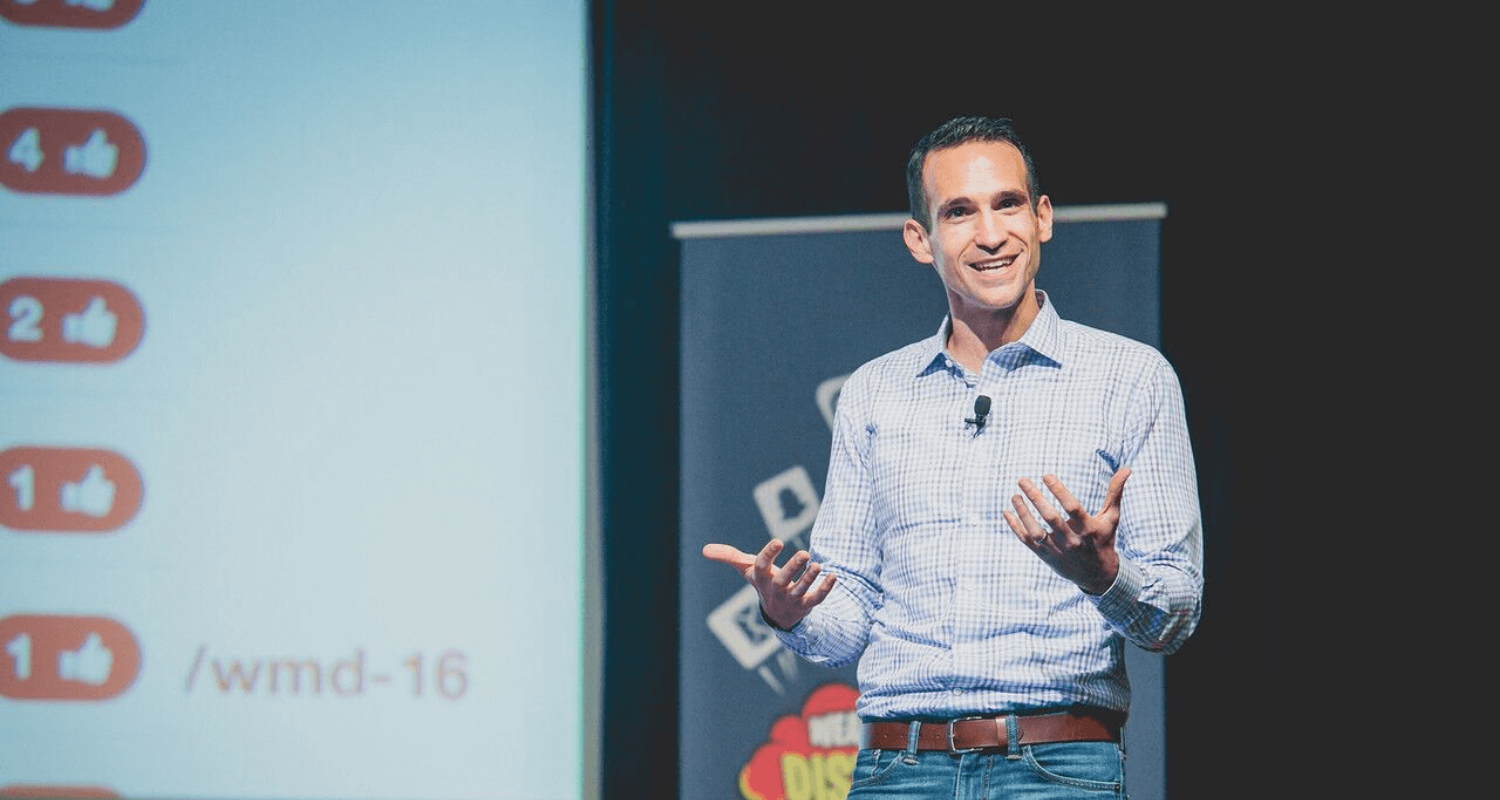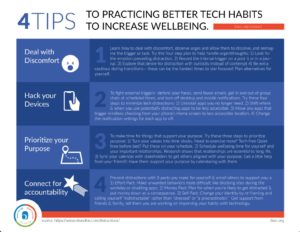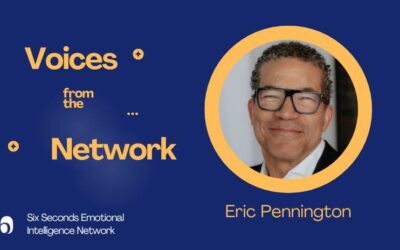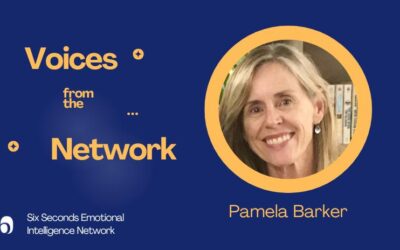Addicted to Your Smartphone? Not So Fast
Stanford professor Nir Eyal says the problem isn’t the technology, it’s us – and offers tips to take back control of our attention and our lives
By Michael Miller – January 8th, 2019

“Tech companies understand what makes you tick and click better than you do,” asserts Stanford professor Nir Eyal, and he would know. In fact, he’s partly to blame. Eyal’s blockbuster book, “Hooked,” was the blueprint Silicon Valley followed to create habit-forming technology. But amid rising concerns about tech “addiction” and people’s inability to stop scrolling, Eyal says we’re missing the real problem. In his new book, “Indistractable,” he focuses on the root emotional causes of tech misuse and offers tools to regain control of your attention and your life.
Are you a blamer or a shamer?
“The narrative is that tech is addicting, it’s hijacking people’s brains, and there’s nothing we can do about it,” Eyal explains. “But that is such a disempowering mindset. It’s learned helplessness.”
Within this narrative, Eyal says, most people fall into one of two categories: blamers and shamers. Blamers say it’s the technology – tech companies make me an addict. Smartphones are just too seductive to resist. Shamers, on the other hand, look inward. They say, “I’m broken. I have an addictive personality. I can’t help it.” While the focus is different, both groups subscribe to a belief that they are simply along for the ride – that there’s nothing they can do to change their relationship with technology. These belief systems become self-fulfilling prophecies, and build a superhighway for people to avoid responsibility for their choices.
Do you have to binge on Netflix?
Eyal compares people’s belief in tech addiction to another discredited theory: ego depletion, which is the belief that willpower is a depleting resource. That, in a given day, your willpower can run low like a gas tank. This leads people to tell themselves that because they’re exhausted after a long day, they deserve to watch Netflix and eat a pint of Ben & Jerry’s. That’s ego depletion in action. But research has found that ego depletion only exists among one group of people: those who believe in ego depletion. By believing that you don’t have the power of choice, you take it away from yourself.
Similarly, he says that if you believe tech is hijacking your brain and there’s nothing you can do about it, it’s a self-fulfilling prophecy. It becomes true because you believe it.
But according to Eyal, technology isn’t the trigger, it’s a coping mechanism. And if we want to change the behavior, we need to focus on the emotional triggers driving the behavior – the part of the iceberg that’s beneath the surface. We need to be smarter with feelings. “If you don’t have the skills to become indistractable,” Eyal says, “no doubt they will get you.” And the skills to become indistractible are the skills of emotional intelligence.
How to Become Indistractible with Emotional Intelligence
Eyal’s proposed solution is a near perfect match with the Six Seconds Model of EQ. It starts with self-awareness. “First ask yourself, when do I give in to this?” Eyal says. “What is the emotional trigger I am looking to escape? Is it stress? Anxiety? Fatigue? Loneliness? When I use this, what is it that I am trying to escape? When we’re lonely, we check Facebook. When we’re bored, we check YouTube, Reddit or Instagram. Bring awareness to the psychological discomfort driving the behavior.” That self-awareness opens the door to make different choices.
Once you have that increased self-awareness, how can you choose to use technology more intentionally, whether it’s at home or at work? Conventional thinking says, “Get rid of the distraction.” No more social media, or email, or whatever it is. But for most people, that isn’t reasonable, nor is that even what they really want. Technology is fun! And helpful. Instead, Eyal recommends marking out time for using it, but on your terms. To do so, he recommends trying “time boxing” or creating a “time box calendar,” which basically means planning out every minute of your day, including time for Slack and emails at work, or time at home for social media. The point is to take things that randomly distract us throughout the day – the “rings, dings, pings and things” – and set aside time for them. Then instead of habitually reverting to tech use as a coping mechanism or just out of habit, we consciously choose how to engage. We see that we have options and think strategically about the pros and cons of each course of action. That’s the Choose Yourself part of the Six Seconds Model of EQ.
And finally, Eyal says you must connect these choices about tech use and time management with your values. This infuses them with importance, relevance and staying power. “Start with your values, which are the attributes of the person you’d like to become.” Then look at your calendar and make sure you have made time for your values. “Many of us talk a big game about values, myself included. If someone had asked me years ago, ‘What’s important to you, Nir?’ I would have said, ‘Well, my health, my family, my relationships. But if you looked at my calendar, you wouldn’t see any of that. Today, I have turned my values into time.’”
This goes far beyond just limiting technology use: “How we spend our time is really the sum totality of who we are. These little choices add up to big, profound choices about who and what you prioritize.”
4 Practical Tips to Practicing Better Tech Habits
Eyal offers 4 practical tips to recognize, manage and transform habits of tech misuse. We’ve arranged them into a free download, which we are happy to email you.

What’s new in emotional intelligence?
What Should Schools Prepare Us For? Educating for a Future That Inspires and Uplifts
In Italy, only 5% of workers are engaged in their jobs—an economic crisis with deep roots in the education system. What needs to change?
From Enemy to Ally: How Eric Pennington Changed His Relationship with His Own Emotions – and Found His Life’s Purpose
How emotional intelligence helped Eric Pennington transform corporate life setbacks into strengths – and find purpose in both work and life.
Emotional Intelligence at Work: In the Era of AI, What Happens to Human Skills?
Who’s winning the artificial intelligence race: machines or people? Research finds AI investment leads to disinvestment in human skills
Fortifying the Mental Health of the Entire School Community with Emotional Intelligence
Wellbeing program at St. Peter’s Primary replenishes reserves post-COVID: ‘Truly life changing for many of our staff,’ school leaders say. Read the full case study here.
Helping Others Achieve Overall Well-being and Healthy Connections: How Emotional Intelligence Guided Pamela Barker’s Career Path Growth
Pamela Barker’s journey began with healing bodies, but it was her discovery of emotional intelligence that unlocked her true purpose: helping others achieve overall well-being and healthy connections. From her days as a physical therapist to becoming a passionate EQ coach, Pamela’s story is one of transformation, resilience, and the power of connection. Her experience shows that real change starts from within.
Emotional Intelligence at Work: Exploring the Principles of Exceptional Leaders
Check out these 7 valuable leadership lessons to be the best leader you can be and bring the best out of people.
- Pursue Noble Goals in the Six Seconds Model of EQ - July 29, 2023
- Increase Empathy in the Six Seconds Model of EQ - July 26, 2023
- Exercise Optimism - July 24, 2023






